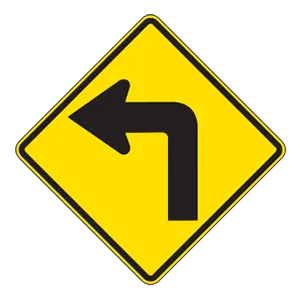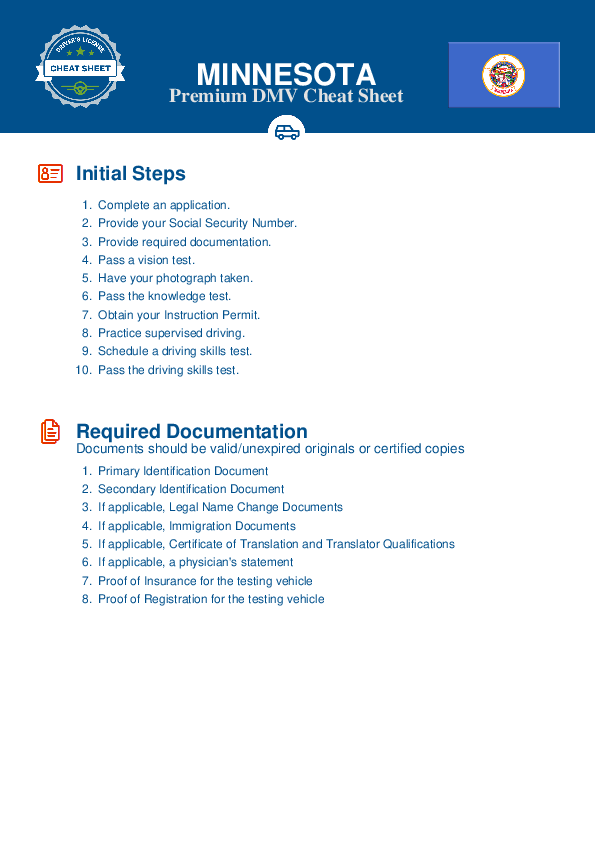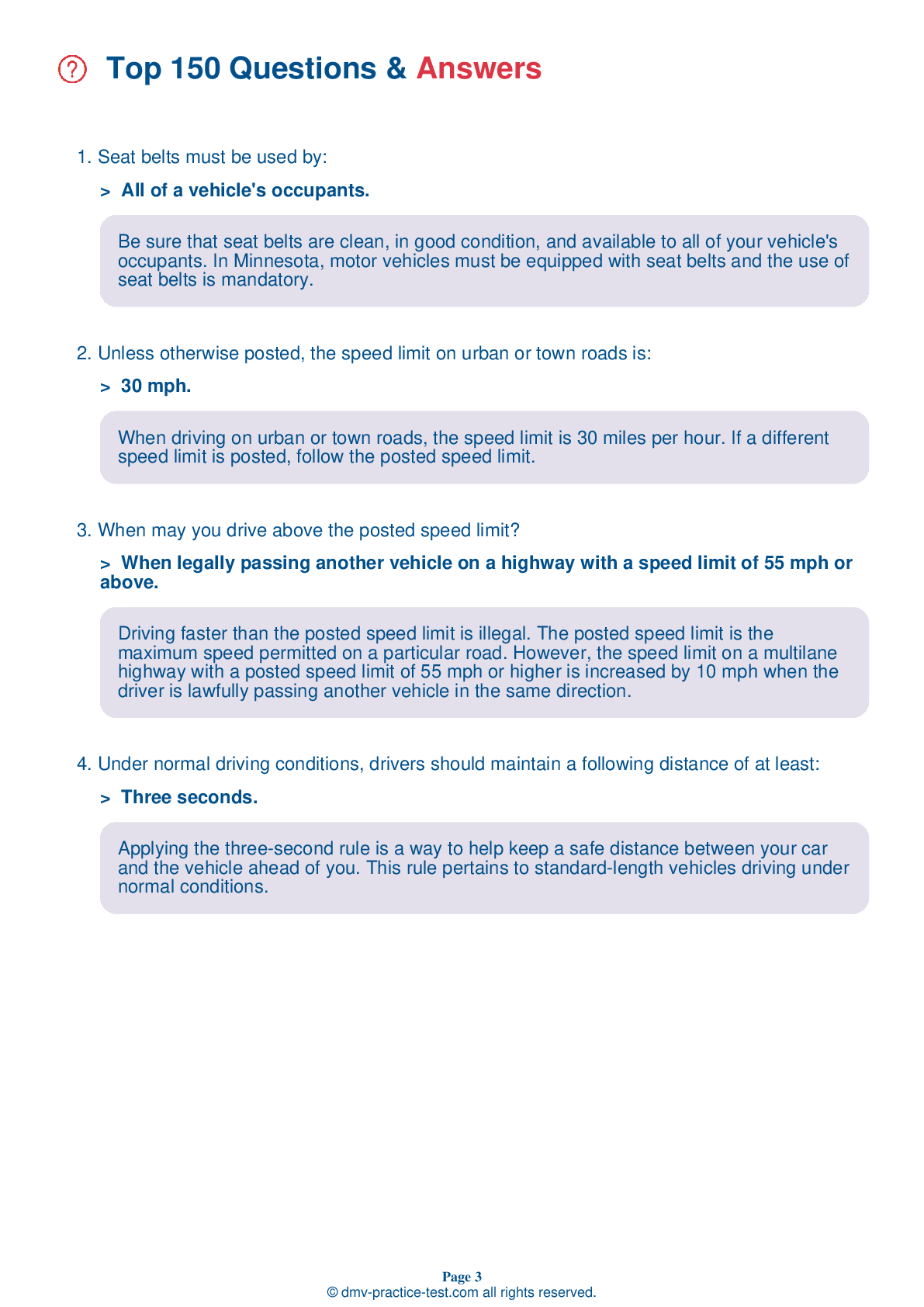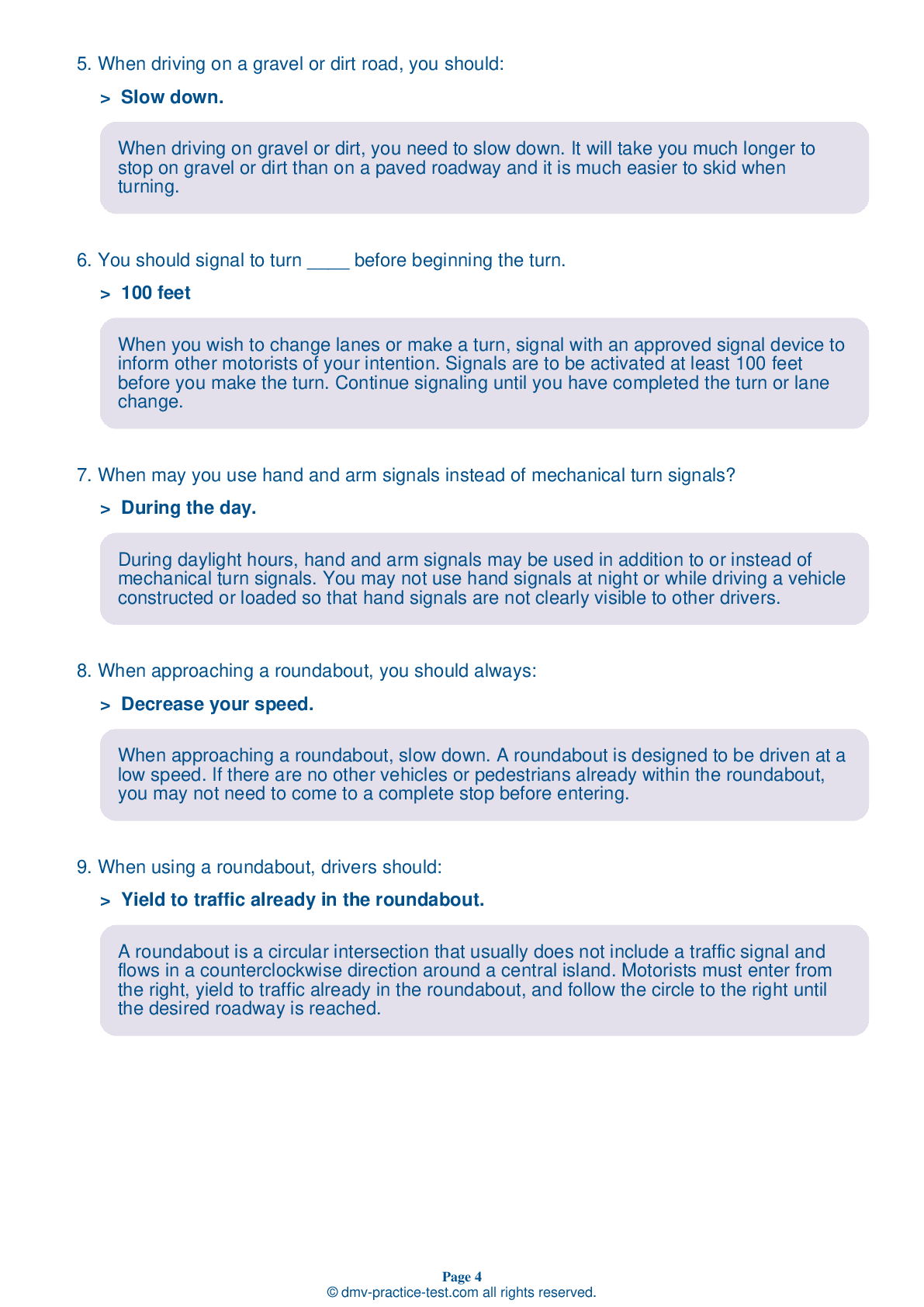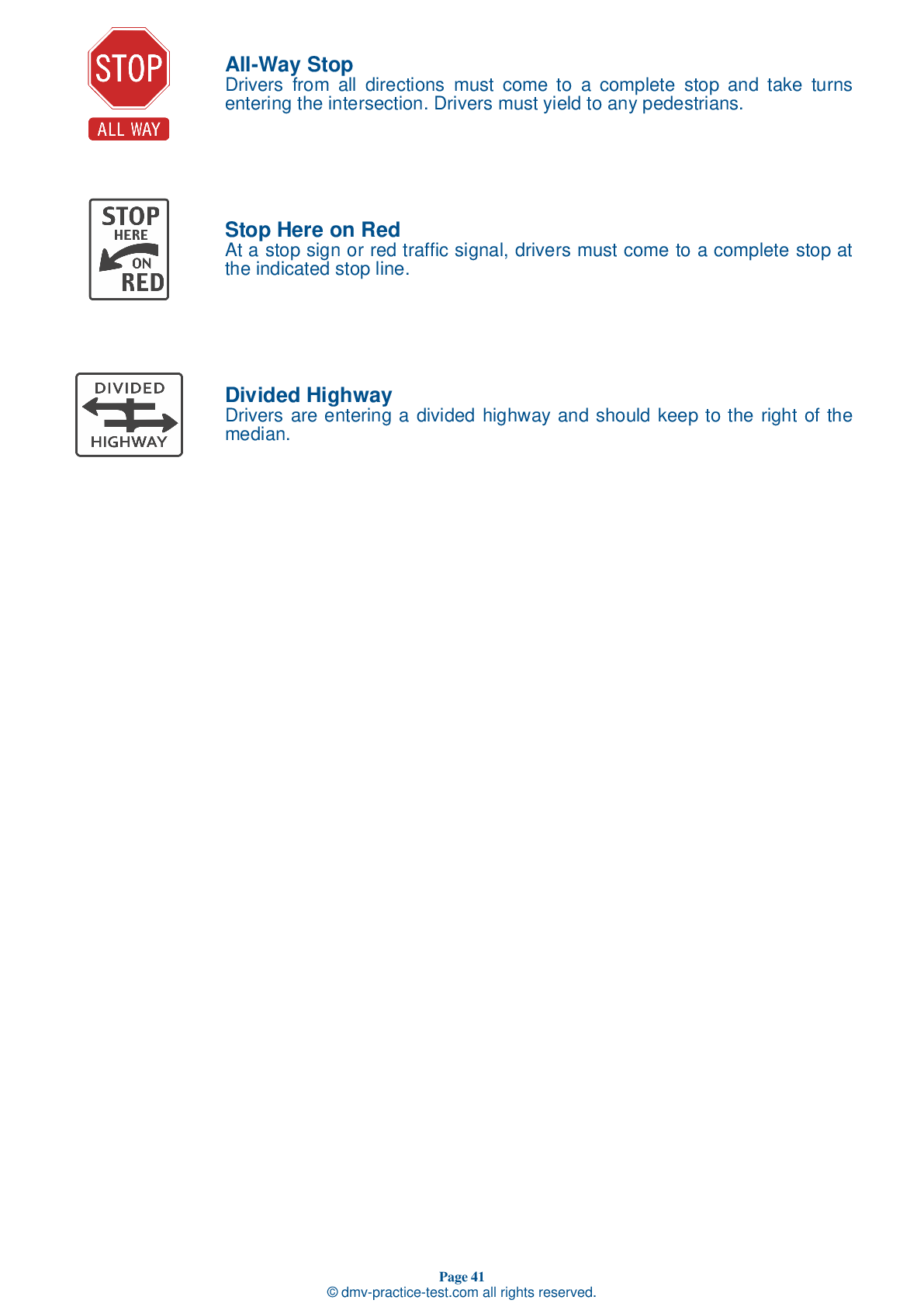FREE Minnesota DMV Practice Test #5 Page 4 of 5
The Minnesota DMV practise examinations have been updated for January 2025. It includes questions based on the Minnesota Driver Handbook's most essential traffic signals and laws for 2025. Use actual questions that are very similar (often identical!) to the DMV driving permit test and driver's licence exam to study for the DMV driving permit test and driver's licence exam.
On the practise exam, each question gets a tip and explanation to help you remember the concepts. The written component of the official Minnesota DMV test will include questions about traffic rules, traffic signs, and driving statutes, as well as knowledge from the Driver Handbook.
To obtain a passing grade, you must correctly answer 32 of the 40 questions. To help you prepare for your instruction permit or driver's licence, take our Minnesota DMV practise test.
The DMV exam is available in several languages.
Using any kind of testing assistance will result in an automatic fail, and the DMV may take additional action against your driver's licence, so stay away from it.
25 . In which of the following ways can alcoholic beverages affect you?
Alcohol dulls the parts of your brain that control inhibition, judgment, and self-control. As a result, you may feel stimulated, lively, and a bit giddy or foolish after consuming alcohol. Alcohol also impairs your reaction time, coordination, and balance. Your vision and ability to judge distance suffers after alcohol consumption, making it difficult to react to your surroundings.
26 . When approaching a railroad crossing, you should:
When you see any signs indicating a nearby railroad crossing, you should slow down, look for a train, and be ready to stop. If the red warning lights are flashing or the gate is down, you must stop 15 to 50 feet before the railroad tracks. Do not try to go around the gate.
27 . This sign means:
